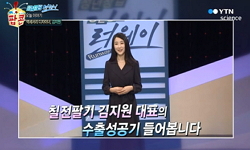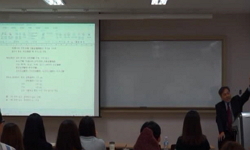唐詩意圖 (Tangsiyido) refers to paintings inspired by Tang Poetry. In China, Korea, and in Japan, artists often illustrated or expressed the scenes or mood described and suggested in a poem. In the late Chosen period, such prose poems as Tao Y?...
http://chineseinput.net/에서 pinyin(병음)방식으로 중국어를 변환할 수 있습니다.
변환된 중국어를 복사하여 사용하시면 됩니다.
- 中文 을 입력하시려면 zhongwen을 입력하시고 space를누르시면됩니다.
- 北京 을 입력하시려면 beijing을 입력하시고 space를 누르시면 됩니다.
https://www.riss.kr/link?id=A76174858
- 저자
- 발행기관
- 학술지명
- 권호사항
-
발행연도
2002
-
작성언어
Korean
- 주제어
-
등재정보
SCOPUS,KCI우수등재
-
자료형태
학술저널
- 발행기관 URL
-
수록면
63-94(32쪽)
- 제공처
- 소장기관
-
0
상세조회 -
0
다운로드
부가정보
다국어 초록 (Multilingual Abstract)
唐詩意圖 (Tangsiyido) refers to paintings inspired by Tang Poetry. In China, Korea, and in Japan, artists often illustrated or expressed the scenes or mood described and suggested in a poem.
In the late Chosen period, such prose poems as Tao Y?anming's Homecoming odes, and Su Shi' s Red Cliff odes were adopted as a theme of painting. But it was Tang Poetry which was most popular among the paintings. The surviving paintings inform us of the fact that the adoption of Tang Poetry as an inspiration for painting had gained more popularity in the late Chos?n period. It seems that the late Chos?n period painters considered Wang wei and Du fu (杜甫, 712-770)' s poems as the most important for their paintings. Many of them correspond to examination topics for painters-in-waiting (差備待令畵員, Chabidaery?ng hwaw?n) at Kyujanggak (奎章閣) in the late Chos?n period.
The popularity of Tangsiyido was brought about by the popularity of Tang poetry in the late Chos?n period. While there were no publication of Song poetry, many selections of Tang poetry were published, reflecting the contemporary literary taste. The introduction of various painting manuals such as The Manual of Painting Tang poetry and The Mustard Seed Garden Manual of Painting had a profound influence on the creation of paintings inspired by poetry done in the style of Southern School painting.
It is highly probable that most literati painters tended to pick one of their favorite poems for the theme of their paintings, and that professional painters tended to illustrate a poem selected by their patrons such as literati, or middle people (中人) who pursued literati's life style, These two groups' paintings, that is, one by literati paintings and the other by professional paintings, show a definite difference in the way they visualize the couplets from a poem, For example, Kang Sehwang (姜世晃, 1713-1791)'s 〈Landscape〉, H? Pil(許?, 1709-1761)' s 〈Painting inspired by Du Fu's poem〉 and Ch?ng S?n and Kim H?igy?m (金喜謙, 18세기)'s 〈Peach Blossom Spring 桃源行〉 reveal differences in the choice of poems and the way they were portrayed. Kang Sehwang' s 〈Landscape〉, even when inspired by Wang Wei's poem, did not truly betray the contents of the poem, but followed the generalized style in painting manuals, H? Pil's 〈Painting inspired by Du Fu's poem〉 did not portray a bird, a dog, or a bamboo wood, mentioned in the inscription, Literati painters expressed their own interpretation of a poem, In contrast to those, paintings of Ch?ng S?n and Kim H?igy?m‘s 〈Peach Blossom Spring〉, which take its theme from Wang Wei's 〈Peach Blossom Spring〉, betray an awareness of the specific context of couplets in the original Tang poem, These paintings had the possibility of having been patronized by someone, Each couplet that they inscribed on the painting generally contains the most concrete image of the poem,
In the late Chos?n period, true-view landscape paintings flourished more than in any other period. It was opposed to imaginary landscapes or traditional landscapes which were based on themes taken from Chinese literature or from chinese painting manuals, The demand for this traditional and imaginary mode of painting was continued in the late Chos?n period while true-view landscape painting was flourishing, During that period, there was a polarity whose poles were. on one hand, the kind of idealized painting constructed out of conventional forms, and on the other hand, the kind that aims at a reasonably faithful portrayal of a passage of natural scenery, It is reasonable to conclude that those two kind of painting style co-existed reciprocally in the late Chas?n period,
목차 (Table of Contents)
- Ⅰ. 序論
- Ⅱ. 朝鮮 後期 唐詩意圖의 제작배경
- Ⅲ. 朝鮮 後期 唐詩意圖의 주제
- Ⅳ. 朝鮮 後期 唐詩意圖의 화가별 양상
- Ⅴ. 結論
- Ⅰ. 序論
- Ⅱ. 朝鮮 後期 唐詩意圖의 제작배경
- Ⅲ. 朝鮮 後期 唐詩意圖의 주제
- Ⅳ. 朝鮮 後期 唐詩意圖의 화가별 양상
- Ⅴ. 結論
- ABSTRACT
동일학술지(권/호) 다른 논문
-
- 한국미술사학회
- 주진령(Ju Jin-lyung)
- 2002
- SCOPUS,KCI우수등재
-
- 한국미술사학회
- 李秀美(Lee Soo-mi)
- 2002
- SCOPUS,KCI우수등재
-
- 한국미술사학회
- 심주완(Sim Joo-wan)
- 2002
- SCOPUS,KCI우수등재
-
- 한국미술사학회
- 朴孝銀(Park Hyo-eun)
- 2002
- SCOPUS,KCI우수등재






 DBpia
DBpia




